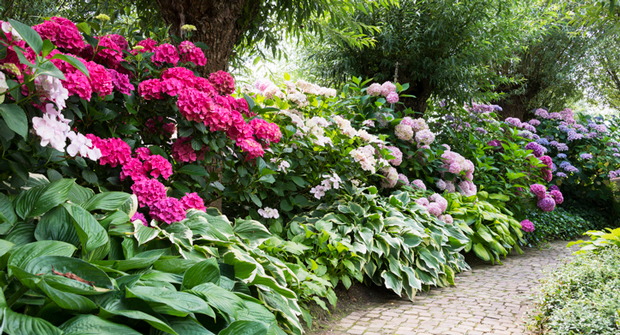Holden Forests & Gardens (HF&G), one of the largest arboreta and botanical gardens in the U.S., is aiming to make research and conservation efforts to enhance the resilience and protect the biodiversity of the Rhododendron species. By combining science with traditional breeding techniques, HF&G is addressing the challenges posed by climate change while enriching gardens and landscapes with more adaptable and ornamental varieties.
Rhododendrons are known for growing in home gardens and botanic gardens, but they are naturally occurring worldwide. Most of the rhododendrons and azaleas people grow in home gardens are hybrids between species, horticultural crosses that have taken the best traits from different wild species to make them prettier, easier to grow and more. The wild species are threatened by climate change and environmental degradation in their natural habitats, so their conservation is critical.
Holden’s David G. Leach Research Station is building a living collection of wild origin plants for breeding, research and conservation. Alongside partners like Botanic Gardens Conservation International and the Global Conservation Consortium for Rhododendron, the company said it’s committed to conserving Ohio’s native rhododendrons and azaleas, U.S. threatened species (Rhododendron prunifolium and R. flammeum) and as many other species from the U.S. and abroad as possible.
These plants are not only of conservation and horticultural interest; HF&G is developing the genus Rhododendron as a model study system to explore the evolution of woody plant biodiversity. Researchers study the physiological and genetic differences between species from warm and cold climates, especially regarding which traits make each species well-suited for specific environments. HF&G’s work integrates traditional research methods, such as manipulative experiments and chemical analyses, with modern research techniques like high-throughput spectral imaging to uncover the traits that give plants an edge in stressful environments.
A key research focus is the species Rhododendron minus, which is native to the southeastern U.S. This species exhibits significant variability across its range from North Carolina to Alabama, providing a unique opportunity to study how traits such as anatomy, morphology, metabolism and pigmentation contribute to local adaptation. The research team’s findings are interesting beyond just rhododendrons, shedding light on how plants in general can adapt to challenges such as drought, heat and frost, and the genetic variation within species that drives evolution through natural selection.
In tandem with its research, HF&G’s breeding program is developing rhododendrons and azaleas with improved traits for landscapers and gardeners. Earlier this year, HF&G introduced its own brand of rhododendron hybrids, created by former Leach Field Station director Stephen Krebs. Holden’s Fuschia, Peach, Pink, Pink Flare, Raspberry Ruffles and Red have improved resistance to root rot disease, are tolerant of some sun, are hardy in zone 5 and are just as ornamental than traditional varieties, according to the company. The breeding group is also currently investigating new ornamental traits for azalea hybrids prepared for a changing climate.
HF&G’s two primary projects highlight its efforts to understand and enhance plant resilience:
“Our research is not just about understanding plants — it’s about equipping them for the future,” said Connor Ryan, rhododendron collections manager at HF&G. “By preserving biodiversity and enhancing plant resilience, we’re making an impact that extends from the lab to the garden and beyond.”


